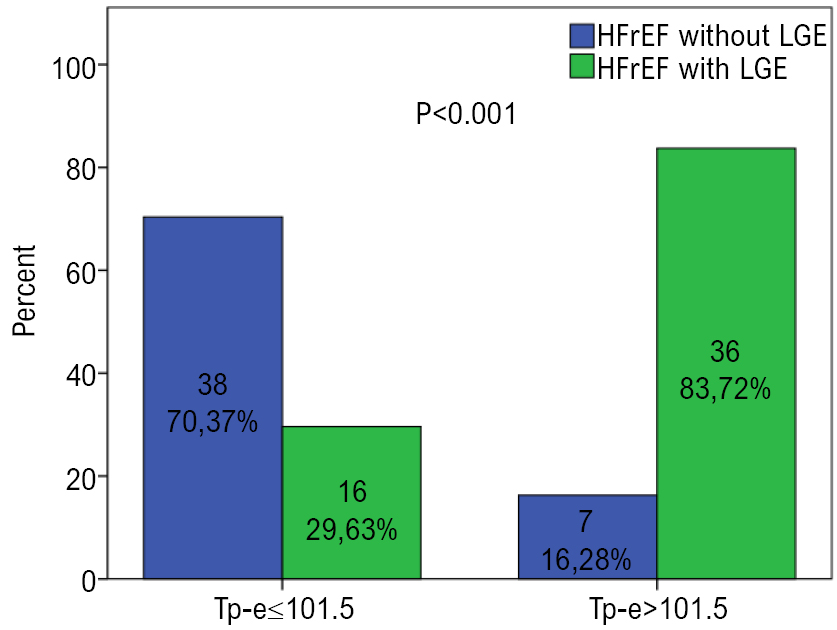Arq. Bras. Cardiol. 2021; 117(4): 678-687
Relationship between Late Gadolinium Enhancement and Ventricular Repolarization Parameters in Heart Failure Patients with Reduced Ejection Fraction
This Original Article is referred by the Short Editorial "Myocardial Scar and Ventricular Repolarization on the electrocardiogram: Insights from Cardiac Magnetic Resonance Imaging".
Abstract
Background
Heart failure with reduced ejection fraction (HFrEF) is a highly prevalent disease that requires repeating hospitalizations, causes significant morbidity and mortality. Therefore, early recognition of poor outcome predictors is essential for patient management.
Objective
The aim of the present study is to investigate the relationship between late gadolinium enhancement (LGE) detected by cardiac magnetic resonance (CMR) and repolarization parameters such as corrected QT (QTc) interval, Tp-e interval, frontal QRS-T angle detected by 12 lead electrocardiograph (ECG) in HFrEF.
Method
In this single-center, retrospective observational study included 97 consecutive HFrEF patients who had CMR scan. Study population was divided into two groups according to the presence of LGE. Echocardiographic and CMR measurements and demographic features were recorded. QTc intervals, Tp-e intervals, frontal QRS-T angles were calculated from the ECG. A p-value less than 0.05 was considered statistically significant.
Results
LGE was detected in 52 (53.6%) out of 97 HFrEF patients. QTc intervals (p=0.001), Tp-e intervals (p<0.001), frontal QRS-T angles (p<0.001) were found to be significantly higher in LGE group when compared to non-LGE group. In univariate regression analysis which was performed to investigate the predictors of LGE in HFrEF, all three repolarization parameters were reached significant values but in multivariate analysis the only repolarization parameter remained significant was Tp-e interval (OR=1.085 95% CI 1.032-1.140, p=0.001).
Conclusion
With the prolongation of the Tp-e interval, the presence of myocardial fibrosis which is an arrhythmogenic substrate, can be predicted in patients with HFrEF.
1,157

